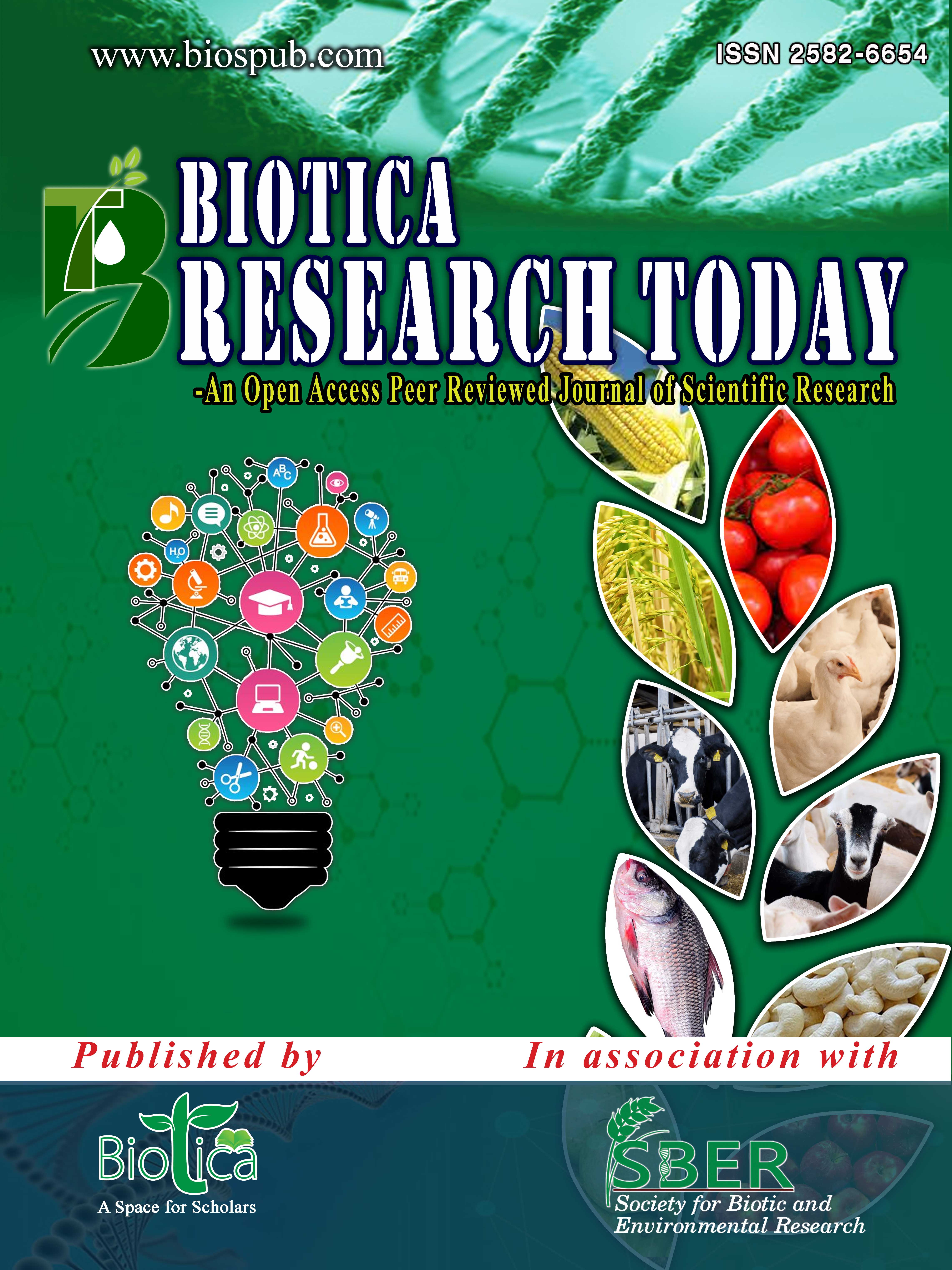Lime Pelleting to Improve Pulse Production on Acid Soils: Evidence from Common Bean (Phaseolus vulgaris L.)
DOI:
https://doi.org/10.54083/ResBio/3.2.2021.116-120Keywords:
Aluminium toxicity, French bean, Legumes, Lime requirement, North-eastern India, Seed pelletingAbstract
Liming is the key to success of crop production on acid soils. The practice however has not met wider adoption, due largely to the higher doses of lime requirement. To ascertain the effect of lime pelleting (seed pelleting with lime) vis-a-vis higher doses of lime as required for furrow application and broadcasting, we conducted a greenhouse pot experiment wherein common bean (Phaseolus vulgaris) was grown with five treatments: T1: control (no lime), T2: lime pelleting with gum arabic, T3: lime pelleting with rice starch, T4: lime application @ 300 kg ha-1 equivalent dose, and T5: lime application @ 3000 kg ha-1 equivalent dose. Lime pelleting caused 12-14% improvement in crop yield compared to 31 and 38% increments at higher doses of lime application i.e., T4 and T5, respectively, with a commensurate increase in associated yield parameters. Higher leaf chlorophyll content (SPAD index) caused by liming and lime pelleting suggested improved plant nutrition. Rhizosphere pH increased with liming (p≤0.05), with corresponding reductions in exchangeable Al and acidity, but the effects of lime pelleting were discernible only at lower levels of statistical significance (p≤0.2). Contrary to the popular belief, liming reduced soil P availability, implying that the growth stimulation by liming was not caused by increased P availability, but by reduced Al toxicity and ensuing improvement in plant’s nutrient acquisition efficiency. To conclude, lime pelleting is proposed as an alternative low-cost, easily-adoptable technology for reducing lime requirement and for improving pulse productivity on acidic soils.
Downloads
Downloads
Published
How to Cite
Issue
Section
Categories
License
Submission of a manuscript implies that when the manuscript is accepted for publication, the authors agree to automatic transfer of the copyright to the publisher (or grant the Publisher exclusive publication and dissemination rights). The Biotica, as the publisher, has the right to enter into any agreement with any organization in India or abroad engaged in reprography, photocopying, storage and dissemination of information contained in this journal. The Biotica has no objection in using the material, provided the information is being utilized for academic purpose but not for commercial use. Due credit line should be given to Biotica where information will be utilized.









 |
|


